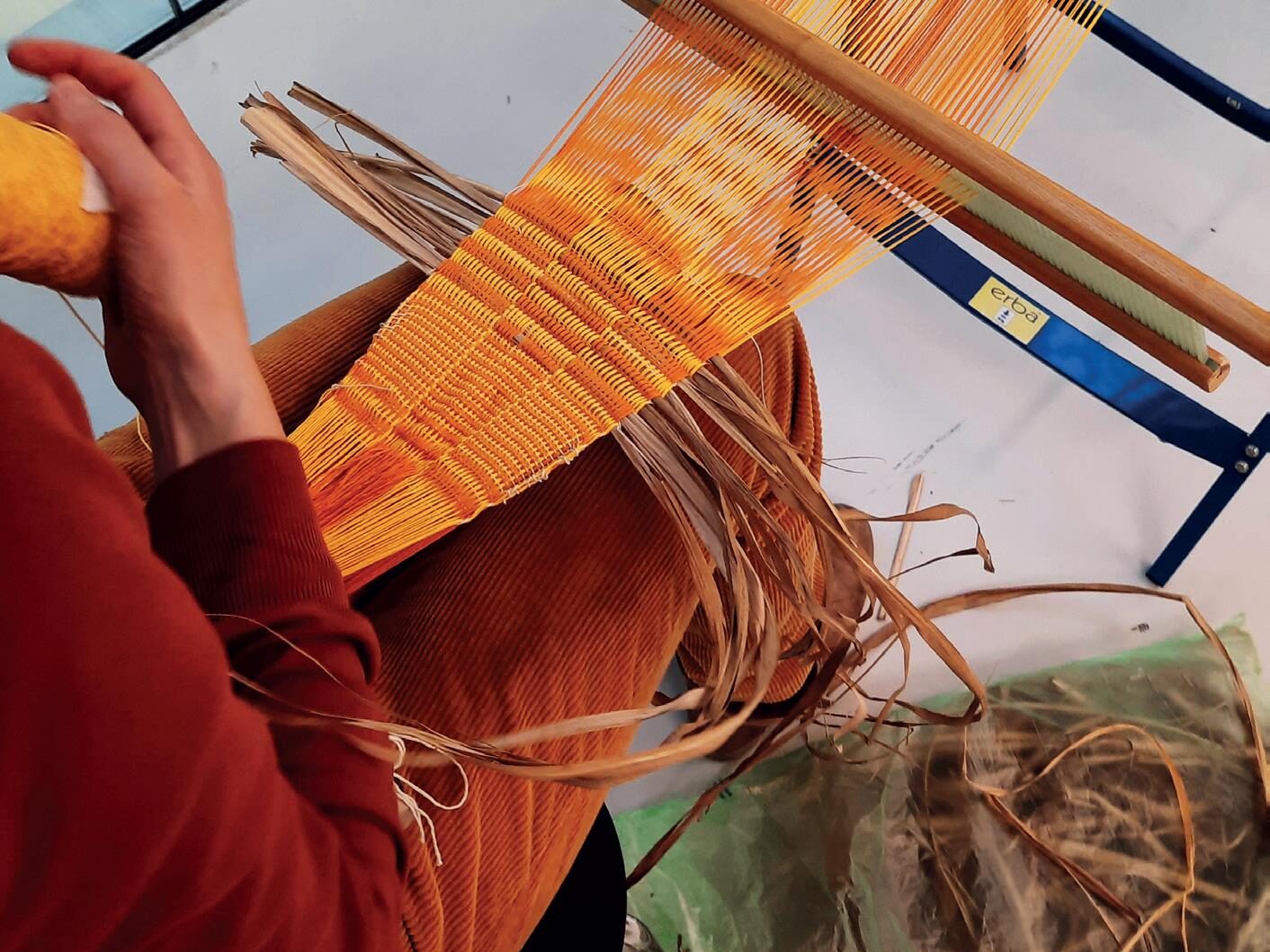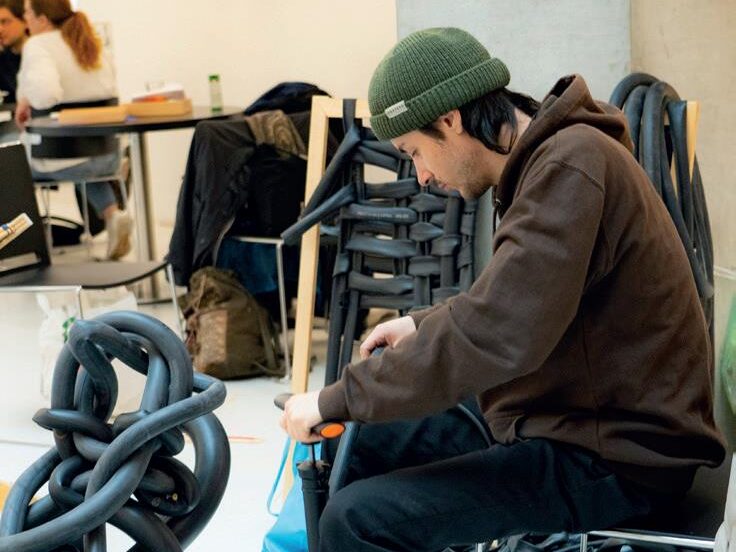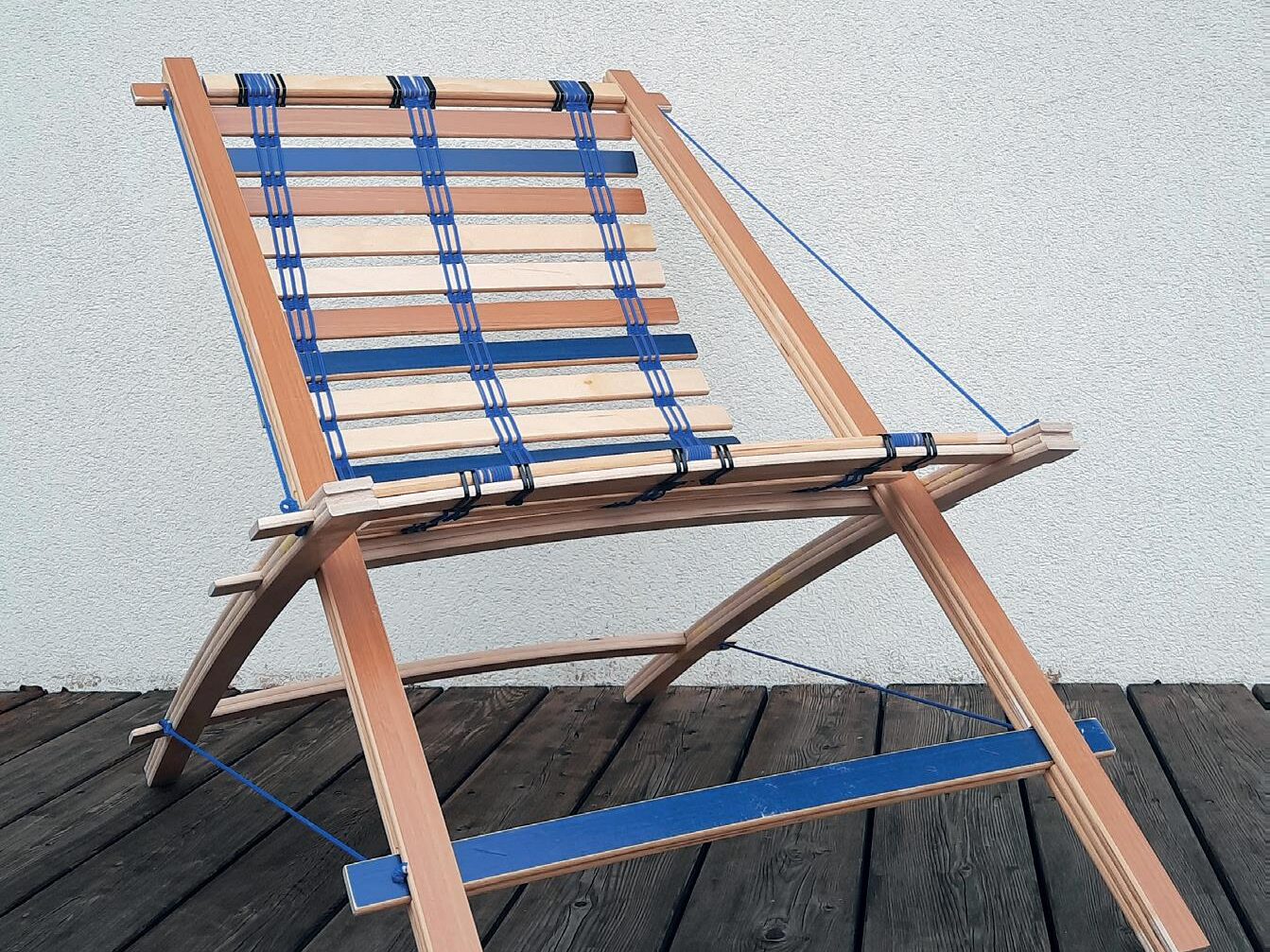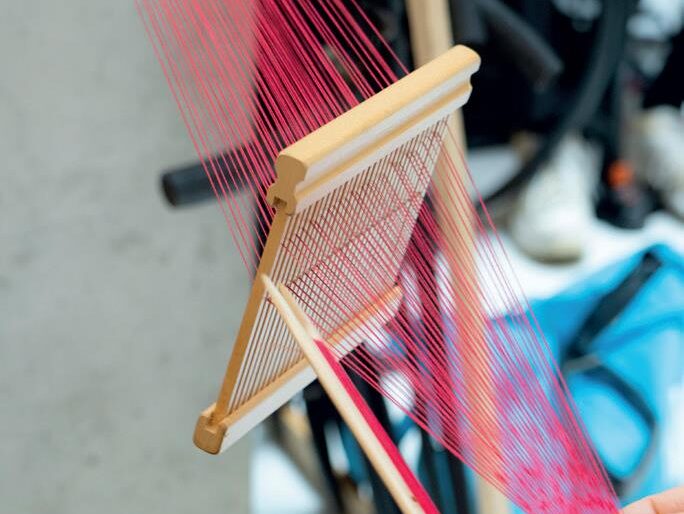
The project uses „valueless“ materials from the regional environment to create awareness of resource orientation. The participants should learn appropriate processing techniques and develop an understanding of different material classes. Material access and the technique of weaving create new possibilities for the use of materials. The project promotes a reflective attitude to the issue of waste and enables artistic design with recycled materials. Prototype-like objects and samples with a wide range of applications are created. The participants gain knowledge in weaving and are empowered to shape their own future.
The intentions are in the areas of ecological change, sustainability, circular economy, shared knowledge, preservation of cultural heritage and upgrading of the surrounding habitat.



The study area is in the field of art and design, specifically focusing on weaving and textile processes. The project emphasizes the use of «valueless» materials from the regional environment, promoting resource orientation, ecological change, sustainability, circular economy, shared knowledge, preservation of cultural heritage, and habitat enhancement.
The pedagogical methodology involves a hands-on and experiential approach. The participants (students from the Institute of Art and Design) are engaged in a three-phase process:
The weaving technique is a central aspect of the pedagogy, drawing on cultural history and allowing for a new form of materials. The project fosters a reflective attitude toward waste issues and aims to empower participants with skills in textile fabric building.
The collaboration involves a group of 10 students working together under the guidance of the project leader. The collaborative experience includes:
The collaborative nature of the project is intended to create a supportive and interactive environment, where participants learn from each other’s insights and contribute to the collective understanding of material use, weaving techniques, and sustainable design.
School (Classroom), green areas around the school, meeting places, city.
Individual material depending on the specific question or interest, which can be interwoven under the aspects of sustainability and above all in relation to Cradle to Cradle. Yarns and twines that match the aforementioned materials. Simple weaving devices such as riggid heddle or self-made weaving tools and tools for processing the materials to be used.
The participants (school and extracurricular context) are encouraged to look for materials (natural or artificial) from their environment that they would like to work with. These should be cheap and easy to obtain in order to keep the cost factor for school use as low as possible. This material is combined with the technology of weaving. Based on the knowledge of the previously made experiments with the material and technology, an artefact should be created that can appear interesting for the implementation of various artistic or designspecific applications. These new, comprehensible materials with their properties are played back in a group as part of a presentation (different methods such as exhibition, mini fair, presentation…) in order to open up possible applications or associations.
New questions about materiality, function and implementation were opened up. Space was given to explore and understand, to try new approaches, to get to know properties and to explore possibilities. Based on these findings, the artefacts can be used in a next step for an artistic examination in the field of design, applied art or didactics. Some prototype-like objects were created, but also samples that can be used in further steps for various areas of application.The knowledge of creating surfaces or objects with simple weaving devices was acquired.
The evaluation took place in personal discussions with the project leader and the participants at each meeting. The content was mainly the individual areas of interest and the choice of materials. By asking questions, an attempt was made to achieve a more in-depth examination of the action. Furthermore, a written and photographic documentation of the work steps, the discussion of the content and a personal reflection on the artistic craftsmanship was required. A presentation of the process and the artefact was set as an objective from the beginning and was thus a guiding element of the investigation. Another tool was an anonymous online opinion poll in which the teacher and the teaching process were asked about and evaluated. This feedback serves to adjust later implementations and adaptations of content, learning and teaching goals.

